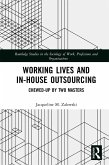This title was first published in 2001. Increasingly, young women throughout Europe educate themselves for a life-long labour market career. So, where does birth fit into a young woman's curriculum vitae? This book takes a welfare state comparative perspective on this issue, analyzing relevant macro policies from four countries whose political views on the combination of work and family differ, namely Germany, Britain, the Netherlands and Sweden. The effects of these macro policies on the micro economic labour market and fertility behaviour are also examined using household panel data from each country. For this purpose, all available information from the four countries has been organized into fertility and work histories on a month-to-month basis around the date of giving birth. Within the welfare state comparative framework, hypotheses on women's labour market transitions in connection with childbirth, women's share in joint family earnings around the birth of the first and the second child, the timing of having a first and subsequent child are derived from economic theory on human capital and labour supply.
Dieser Download kann aus rechtlichen Gründen nur mit Rechnungsadresse in A, B, BG, CY, CZ, D, DK, EW, E, FIN, F, GR, HR, H, IRL, I, LT, L, LR, M, NL, PL, P, R, S, SLO, SK ausgeliefert werden.









